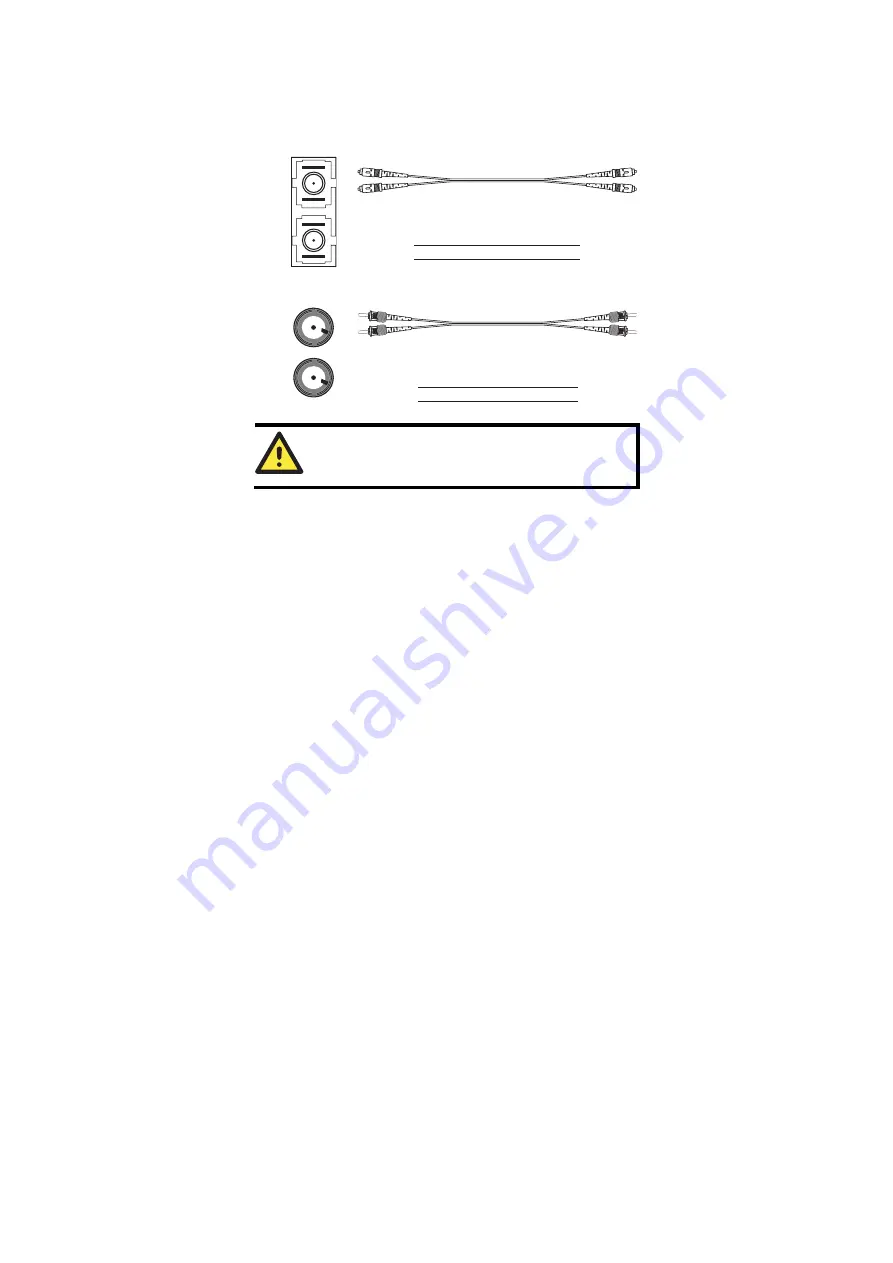
- 11 -
full-duplex transmission.
All you need to remember is to connect the Tx (transmit) port of device I to the
Rx (receive) port of device II, and the Rx (receive) port of device I to the Tx
(transmit) port of device II. If you make your own cable, we suggest labeling
the two sides of the same line with the same letter (A-to-A and B-to-B, as
shown below, or A1-to-A2 and B1-to-B2).
SC-Port Pinouts
SC-Port to SC-Port Cable Wiring
Tx
Rx
A
A
B
B
Cable Wiring
A
A
B
B
ST-Port Pinouts
ST-Port to ST-Port Cable Wiring
Tx
Rx
A
A
B
Cable Wiring
A
A
B
B
B
ATTENTION
This is a Class 1 Laser/LED product. To avoid causing serious
damage to your eyes, do not stare directly into the Laser Beam.
Redundant Power Inputs
Both power inputs can be connected simultaneously to live DC power sources.
If one power source fails, the other live source acts as a backup, and
automatically supplies all of the EDS’s power needs.
Alarm Contact
The Moxa EtherDevice Switch has one Alarm Contact located on the top panel.
For detailed instructions on how to connect the Alarm Contact power wires to
the two middle contacts of the 6-contact terminal block connector, see the
Wiring the Alarm Contact section on page 8. A typical scenario would be to
connect the Fault circuit to a warning light located in the control room. The
light can be set up to switch on when a fault is detected.
The Alarm Contact has two terminals that form a Fault circuit for connecting to
an alarm system. The two wires attached to the Fault contacts form an open
circuit when (1) EDS has lost power from one of the DC power inputs, or (2)
one of the ports for which the corresponding PORT ALARM DIP Switch is set
to ON is not properly connected.
If neither of these two conditions occurs, the Fault circuit will be closed.


































